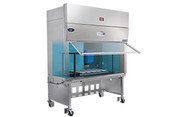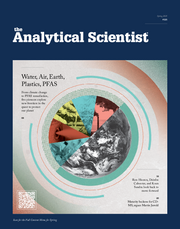Liver Tissue Analysis Uncovers Key Mechanisms Driving Hepatocellular Carcinoma
A multi-omics study distinguishes two subtypes of chronic liver disease that may progress to liver cancer via distinct molecular pathways
| 2 min read | News

A multi-omics investigation has uncovered distinct molecular patterns in liver tissue affected by non-viral chronic liver disease (CLD), offering insight into how these changes may lead to hepatocellular carcinoma (HCC). The study, led by a team at Hiroshima University and collaborators at Hiroshima Prefectural Hospital, Japan, applied RNA sequencing and metabolomics to paired liver samples from patients with and without HCC, leading to the identification of two mechanistically distinct CLD subtypes.
The researchers analyzed non-cancerous liver tissue adjacent to tumors in patients with CLD, using RNA sequencing to quantify gene expression and liquid chromatography-mass spectrometry to identify metabolite profiles. This approach allowed them to examine the interplay between transcriptomic alterations and metabolic dysfunction, revealing insights on potential cancer-promoting pathways.
“Through multi-omics analysis of transcriptomic and metabolomic data, we aimed to uncover molecular mechanisms underlying HCC development and identify novel targets for chemoprevention,” said first author Hikaru Nakahara in the team’s press release.
Subtype 1 – a cohort of relatively younger patients – exhibited upregulation of inflammation-related gene expression and signaling pathways, including cytokine-cytokine receptor interactions. In contrast, Subtype 2 – containing older patients – showed evidence of age-related metabolic decline, including reduced fatty acid oxidation and increased accumulation of lipid metabolites. Both subtypes demonstrated downregulation of genes related to peroxisome and mitochondrial function.
The team also assessed the potential of therapeutic intervention using published data from a murine model. In mice fed a high-fat diet to induce non-alcoholic fatty liver disease, inflammatory gene expression was suppressed when the antioxidant epigallocatechin gallate (EGCG), a green tea catechin, was supplemented. The authors propose that EGCG or related compounds may have clinical utility in modifying CLD-related cancer risk, though further studies are needed.
"The molecular mechanisms underlying the development of HCC from CLD have been shown to involve activation of inflammation-related signals and age-related metabolic abnormalities. It is suggested that there is a need to distinguish targets for chemoprevention based on these different mechanisms,” said Atsushi Ono, co-author of the study. “In addition, it has been suggested that supplementation with antioxidants, such as epigallocatechin gallate (EGCG), may be effective in ameliorating these abnormalities.”
Looking ahead, the researchers aim to translate these molecular findings into tailored preventive strategies for patients with CLD. “In the future, we hope that treatments will be developed that are tailored to molecular abnormalities, such as eliminating inflammation in the [CLD] group characterized by inflammation, and replenishing [metabolites] that become deficient with age in the [CLD] group characterized by aging,” said Ono.

















